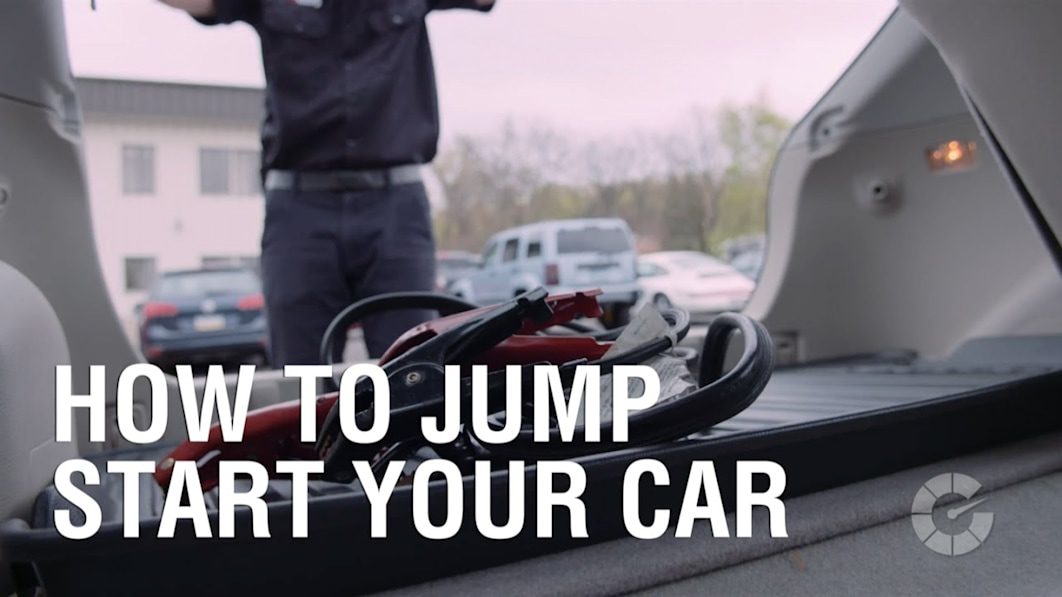How to jump start your car | Autoblog Wrenched

Autoblog may receive a share from purchases made via links on this page. Pricing and availability are subject to change.
The process of jump starting your battery is easy and useful in a pinch, but it’s important to do it correctly to avoid sparks or injury. We’ll show you how.
Watch all of our Autoblog Wrenched videos for more tips on how to diagnose, fix, and modify cars from professional detailer Larry Kosilla. While you’re at it, check out Larry’s other car cleaning and maintenance video series Autoblog Details!
Materials Used:
Instructions (video transcript):
[00:00:00] – [Larry] When you have a weak or dead battery, jump starting your car off another persons electrical system is quick and easy. But remember, the order in which to do it safely, without causing sparks or arcing, can be the challenge. For this, you’ll simply need jumper cables and a functioning second car. I’m Larry Kosilla, pro detailer and trainer, for the last fifteen years. But when it comes to what’s under the hood, I’m the student. Follow me as experts teach me how to diagnose, fix and modify cars on autoblog’s Wrenched. Alright Spence, jump starting your car seems pretty simple. The red on the red, black on the black, start the car
[00:00:30] and this one should start. Is that the way it works? – Well, in theory you’re right, but there is a specific order in which you wanna put the cables on. You don’t wanna damage the factory ECU in the car and you certainly don’t wanna cause a spark or possibly blow up the battery acid fumes on the dead battery. – [Larry] Quality jumper cables come in various lengths, colors and prices, but the most important factor is its gauge. The lower the gauge the more power that can be transferred through the cable and therefore charge the battery
[00:01:00] faster and more efficiently. Likewise, find a clamp with strong claws and closing strength, a rubber insulated cover, to minimize the chance of getting shocked, and at least twelve feet in length. Open the hood of the good car, which may not be a car that you’re familiar with, and locate which side of the car the battery is on. Try to arrange the cars in such a way that you’re not working in between the two cars if they should accidentally roll or engage a gear. But the bumpers should not be touching. Always make sure each car is in park
[00:01:30] and all the accessories, like radios and blower fans, are turned off, the e-brake is engaged, and pull the keys out of the car to avoid your helper from starting it by mistake while you’re under the hood. Now with both cars off, begin with the dead battery. But first untangle your cables and make sure all four leads are not touching one another before you attach them to the battery. A common mistake is to have one side of the cables resting on each other, unknowingly, while working on connecting the other side. If this happens, an arc or a spark may occur,
[00:02:00] which is harmful to the battery and could ignite a fire. Step one is to attach the red, or positive, cable to the dead battery first. The reason this is done is because this particular battery has minimal power so it gives you a lower potential for an issue. The battery will have signs indicating positive and negative and is usually accompanied by a red, for positive, and a black, for negative. Make sure your black lead is resting on plastic and not metal, if possible. For step two, repeat the same process to the good battery
[00:02:30] and attach the positive side, once again. So, now both batteries are connected by their positive cables. For step three, connect the negative, or black cable, on the good car, to the battery terminal. For the final connection, do not connect to the battery. Instead, look for a shiny piece of unrusted metal that may be attached to the engine block or alternator, but avoid any metal that may carry fuel or is near belts or fans that will rotate once the car is turned on. As always, consult your manual as it may suggest
[00:03:00] a suitable attachment point. With both cables properly connected, start the good car and let it run for five to ten minutes. The alternator in the good car is charging both its battery and the dead cars battery. Now get in the dead car and try starting it. If it doesn’t turn over immediately, let it sit for another five minutes on charge. If a second attempt is required, have your helper get in the good car and rev the engine to two to three thousand RPM to increase the output
[00:03:30] of the alternator in hopes of giving the dead battery a little extra juice to get it running. Likewise, double check your connections are solid to the battery or try another ground location, if all else fails. Once the dead battery starts, disconnect the cables in the reverse order in which they were installed. Wrap up the cables and put them back in your trunk and immediately get your battery tested at your dealer or auto parts store. It may be time to replace the battery if its simply lost its charge. Bypassing a dead battery with jumper cables
[00:04:00] can get yourself back up and running on the road, but this typically isn’t a fix. It’s more of a bandage until you or a mechanic finds the root cause of the battery drain. For more how-to car repair videos, visit autoblog.com/wrenched. I’m Larry Kosilla from Ammonyc.com. As always, thanks for watchin.


